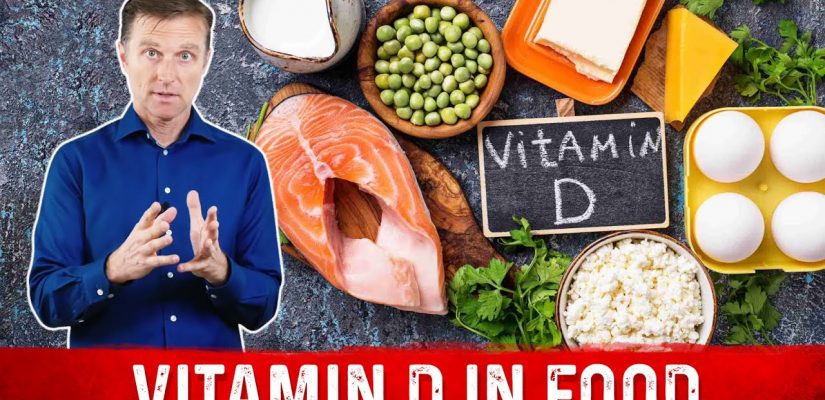
Vitamin D: How Much Food Would You Have to Eat?
Vitamin D may be one of the most important vitamins, but can you get enough from food alone?
Timestamps
0:05 Vitamin D—one of the most important vitamins
0:12 Vitamin D benefits
0:24 Vitamin D deficiency causes
1:50 The RDAs for vitamin D
2:23 Vitamin D in foods
3:50 How to get more vitamin D
4:15 Vitamin D supplements
In this video, we’re going to talk about how much food you would have to eat to get your vitamin D requirements.
In my opinion, vitamin D is one of the most important fat-soluble vitamins out there. Vitamin D is beneficial for bone health, calcium absorption, the immune system, and to help lower inflammation.
But, there are many things that can deplete your vitamin D that go beyond not getting enough vitamin D from your food or from the sun.
A few causes of a vitamin D deficiency:
• Microbes that block the vitamin D receptor
• Stress
• Sugar
• Lowered sun exposure
• Age
• Darker skin has less conversion on the skin of vitamin D from the sun
• Poor health
• Inflammation
• Insulin resistance
The RDAs for vitamin D are 400-800 IUs, which is 10-20 micrograms. I believe those numbers are way too low. I think, at a minimum, you need 5,000 IUs per day. But, if you have health issues, you may need a lot more.
Vitamin D in different foods:
Salmon — 4oz. — 511 IUs
Sardines — 3 oz. — 175 IUs
Egg — 1 — 43 IUs
Tuna — 4oz. — 93 IUs
Milk — 4oz. — 62 IUs
Mushrooms — 1/2 cup — 20 IUs
Cod liver oil — 1 TBSP — 1,360 IUs
As you can see, it’s very difficult to get even the minimum amount of vitamin D you need through food alone. The best way to get vitamin D is from the sun. You need to get a moderate amount of sun. You do not want to burn your skin. In the winter months, you may need a vitamin D supplement. But, if you take a vitamin D supplement, you need vitamin K2 as well. For every 10,000 IUs of Vitamin D3, consider taking 100 micrograms of vitamin K2.
Dr. Eric Berg DC Bio:
Dr. Berg, 53 years of age is a chiropractor who specializes in Healthy Ketosis & Intermittent Fasting. He is the author of The New Body Type Guide and other books published by KB Publishing. He has taught students nutrition as an adjunct professor at Howard University. He no longer practices, but focuses on health education through social media.
DR. BERG’S SHOP: http://bit.ly/2SCarfG
Follow us on FACEBOOK: fb.me/DrEricBerg
Send a Message to his team: m.me/DrEricBerg
ABOUT DR. BERG: http://bit.ly/2uYtCY1
Disclaimer:
Dr. Eric Berg received his Doctor of Chiropractic degree from Palmer College of Chiropractic in 1988. His use of “doctor” or “Dr.” in relation to himself solely refers to that degree. Dr. Berg is a licensed chiropractor in Virginia, California, and Louisiana, but he no longer practices chiropractic in any state and does not see patients so he can focus on educating people as a full time activity, yet he maintains an active license. This video is for general informational purposes only. It should not be used to self-diagnose and it is not a substitute for a medical exam, cure, treatment, diagnosis, and prescription or recommendation. It does not create a doctor-patient relationship between Dr. Berg and you. You should not make any change in your health regimen or diet before first consulting a physician and obtaining a medical exam, diagnosis, and recommendation. Always seek the advice of a physician or other qualified health provider with any questions you may have regarding a medical condition. The Health & Wellness, Dr. Berg Nutritionals and Dr. Eric Berg, D.C. are not liable or responsible for any advice, course of treatment, diagnosis or any other information, services or product you obtain through this video or site.
It’s difficult to get enough vitamin D through food alone. Getting a moderate amount of sun or taking a supplement may be the best way to go when it comes to vitamin D.
